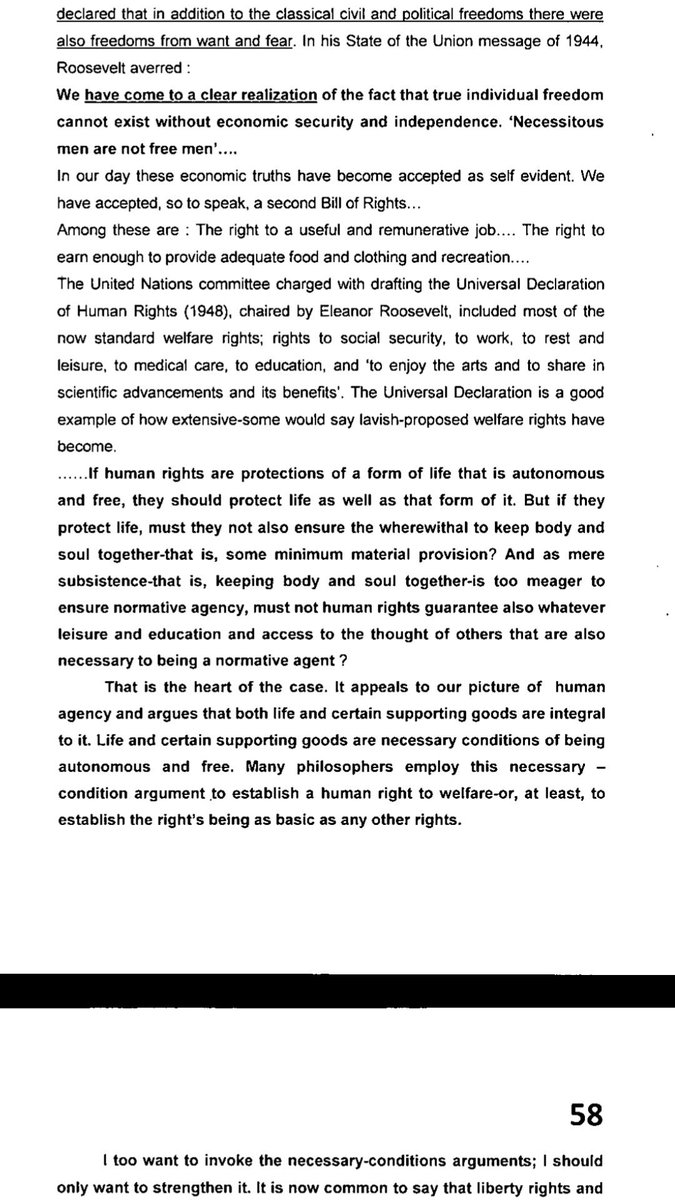J. Chandrachud: the requesting entity will have the purpose of the authentication even if UIDAI doesn't have it. RD denies.
RD vehemently denies
Says Aadhaar act provides enough data protection to citizens.
RD: No data protection law can provide hundred percent protection. The test should be " reasonable, fair and just" protection.
J.chandrachud: What use the REs are making of the data, we don't know right now.
J. chandrachud: real apprehension is that elections are swayed using data analytics. These problems are symptomatic of the world we live in.
RD: can't compare this to Cambridge analytica. We don't have algorithms that Google has.
RD reiterates that UIDAI does not have learning algorithms. Aadhaar Act does not authorize it. We have simple matching algorithms, he emphasizes.
Emphasizes that Aadhaar data cannot be subject to analysis.
RD: we have a powerful media and competitive interests to check any misuse of data.
J. Chandrachud: Interface of Aadhaar with the world outside is the area of concern.
Rd: examine the design of the Act. We don't want any scare mongering. We want people of India to trust us.
Section 57 does not allow just anyone to become a requesting entity. It's a limited exercise. UIDAI will not approve anyone to...
J. chandrachud: why are words "body corporate or any person" used in section 57. That breaks the nexus of the Act with the consolidated fund of India.
RD says private players are not exempt from constitutional norms. And the divide between public and private sector is narrowing.
1. We are numbering human beings. This is what Hitler did.
The history of nos. according to the petitioners began with Hitler. Imagine the state of our society if there were no numbers. Quotes a book by George Ifra
J. Sikri: nobody is saying there should not be nos.why assign it to individuals?
RD:Proximity card, airline tickets (PNR), credit cards etc are all nos.assigned to individuals.Quotes God made integers by Stephen Hawking
J. Chandrachud: Section 3 says Aadhaar is ann entitlement. How did it become mandatory?
RD: It was made mandatory by other Acts.
The government is making it mandatory under other Acts. The bench can look at these Acts separately. Under the Aadhaar act, obtaining Aadhaar is voluntary.
J. Chandrachud: Aadhaar can be made mandatory under a law or through a contract under section 57.
RD: object of section 57 is not to expand but to limit. Backing of contract is needed.
RD: There has to be a prior contract and then uidai is approached for request.
J. Sikri: Where is the guideline for what will be considered a "need" for authentication and what won't be
RD then reads out the relevant provisions of the IT Act.
Instantaneous digital authentication;
Other biometrics can be added only if it enhances accuracy.
J. Sikri: You have to give a proper response to that. Argument was from the exclusion angle.
RD: Probability governs us everywhere. Nothing is certain.
J. Chandrachud: If the probability leads to deprivation of fundamental rights, then there should be safeguards in place to ensure that this deprivation doesn't happen.
RD: I agree that nobody should be denied benefits due to authentication failure. Our submission is inclusion.



